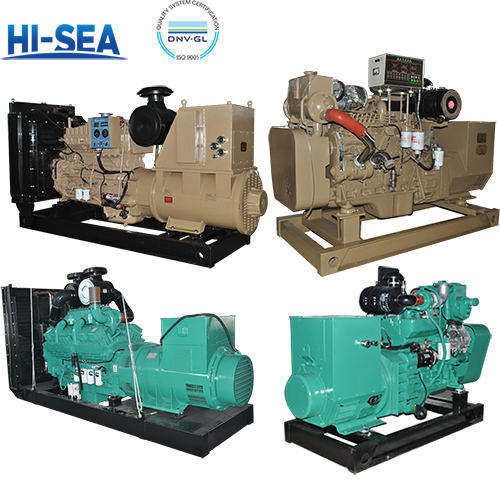
What is the cooling method for marine diesel generator sets?
There are two main cooling methods for marine generator sets: fan water tank cooling and heat exchanger cooling. Both of these methods absorb the heat generated by the engine through water, and then dissipate the heat through different cooling devices.
Overview
There are two main cooling methods for marine generator sets: fan water tank cooling and heat exchanger cooling. Both of these methods absorb the heat generated by the engine through water, and then dissipate the heat through different cooling devices.
1. Fan water tank cooling/Air cooling/Radiator cooling:
Working principle: In the fan water tank cooling system, the engine is cooled through water circulation. The hot cooling water flow of the engine passes through a water tank (also known as a radiator or cooler), and the fan in the water tank automatically runs while the engine is running, blowing over the surface of the water tank to take away the heat.
Components: This system includes a water tank, water pump, fan, pipes, and coolant. The water pump is responsible for pumping coolant from the water tank to the cooling channels around the engine. At the same time, the fan accelerates the cooling process by rotating around the water tank.
Application: Fan water tank cooling is suitable for engines that need to work in relatively dry environments, as it relies on air circulation for heat dissipation. This method can effectively operate in a relatively enclosed environment inside the ship.
2. Heat exchanger cooling/sea-water cooling:
Working principle: The heat exchanger cooling system utilizes seawater or other external media to dissipate heat, rather than relying on air. The hot cooling water flow of the engine passes through a heat exchanger, which exchanges heat with an external medium (such as seawater), thereby transferring heat to the external medium.
Components: The heat exchanger system includes a heat exchanger, seawater pump, seawater pipeline, and coolant circulation system. The seawater pump pumps seawater into the heat exchanger, where it exchanges heat with the coolant and then discharges the heated seawater.
Application: Heat exchanger cooling is suitable for engines that need to operate in aquatic environments, as it can use external media such as seawater for heat dissipation without relying on air circulation. This method is particularly suitable for applications in marine environments such as ships, as it can effectively dissipate heat into the surrounding seawater.
For more marine diesel generator set information, kindly please click here.





